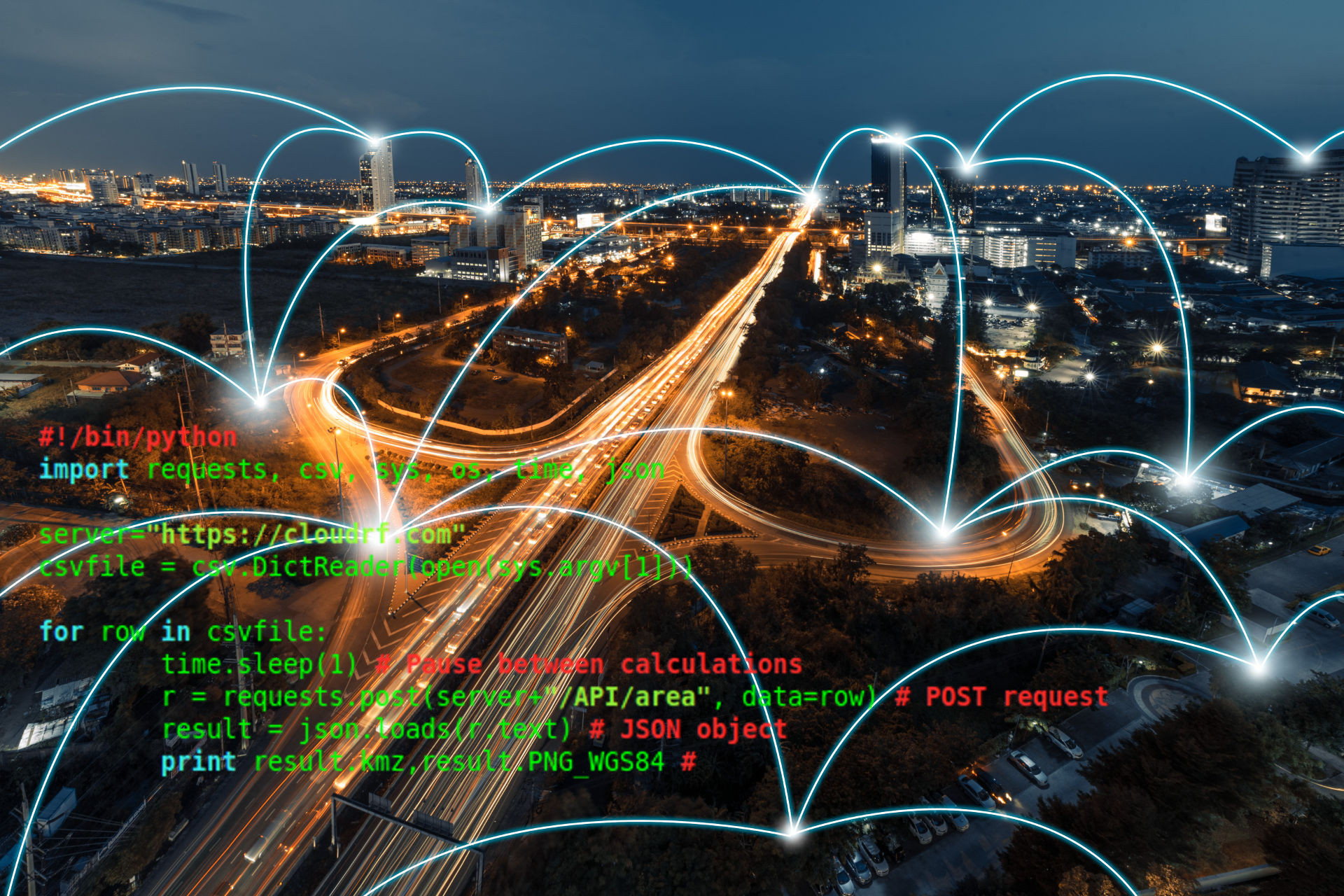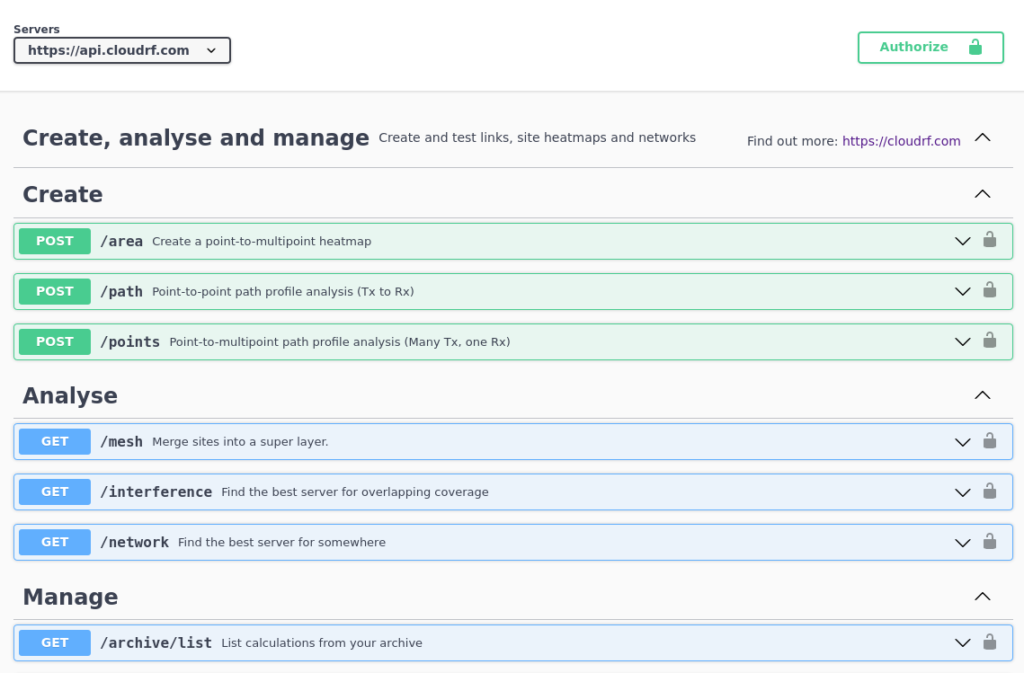
We have a new API.
This long awaited update brings an OpenAPI 3.0 compliant REST implementation with a redesign of public facing architecture so all requests will go to https://api.cloudrf.com and documentation will be at https://docs.cloudrf.com
Human readable requests
The old API grew into an exhaustive list of +43 variables starting from only 10 when it was an Android app. That’s just the public ones. There’s more parameters relating to interfaces. We were adding about a dozen variables a year in the early years of the service and turned down many requests for protocol-specific parameters to keep the number manageable and keep the API signal and technology agnostic.
The new JSON body schema tidies these +40 variables into logical objects which not only align with the interface but can be dropped completely for example in the case of the optional environment object, and defaults used.
New endpoints
The CloudRF API is now at api.cloudrf.com
Documentation is at docs.cloudrf.com
We’ve got OpenAPI / Swagger documentation at https://api.cloudrf.com/swagger-ui/
Legacy ../API/ endpoints and old API documentation are still active and will be until October 2021.
New functions
Some previously undocumented interface features are now in the new API. These are exporting user files into GIS formats and uploading GeoJSON features as private clutter. These are now documented in API2.0
New authentication
The days of sending your unique identifier ‘uid’ and your API key in the HTTP request as uid=…key=… and then scrubbing them out of presentations are thankfully finished!!!
Now you have one API key which you must put into a HTTP ‘key’ header. This keeps your sensitive credentials separate from your body which contains site parameters. This also means the path to offline JSON templates is now clear. We’ve offered templates for years but as rows in a private database, now that the private bits are out of the way you can confidently share an API request.
JSON site templates
A nice feature about this new API is because the sensitive authentication parameters have been removed, and the entire site/antenna/environment exists as a single JSON object, you can take this away and share it, save it, reuse it, publish it. We’re going to build on this concept to offer a new style of template system so as well as saving your settings for quick reuse as you can now, you can share your settings.
This will also enable novice API users to create valid requests by fetching a template eg. “VHF radio.json” from the library and dropping it into an API client, along with their ‘key’ to run that template through their account.
Legacy API sunset 1st October 2021
The legacy API will still run in parallel and will be retired on the 1st October 2021. Please move your projects over to the new API soon and see our documentation and client code examples on Postman to do this.
We are publishing more application specific examples to assist with this and will be on hand to help customers migrate.





